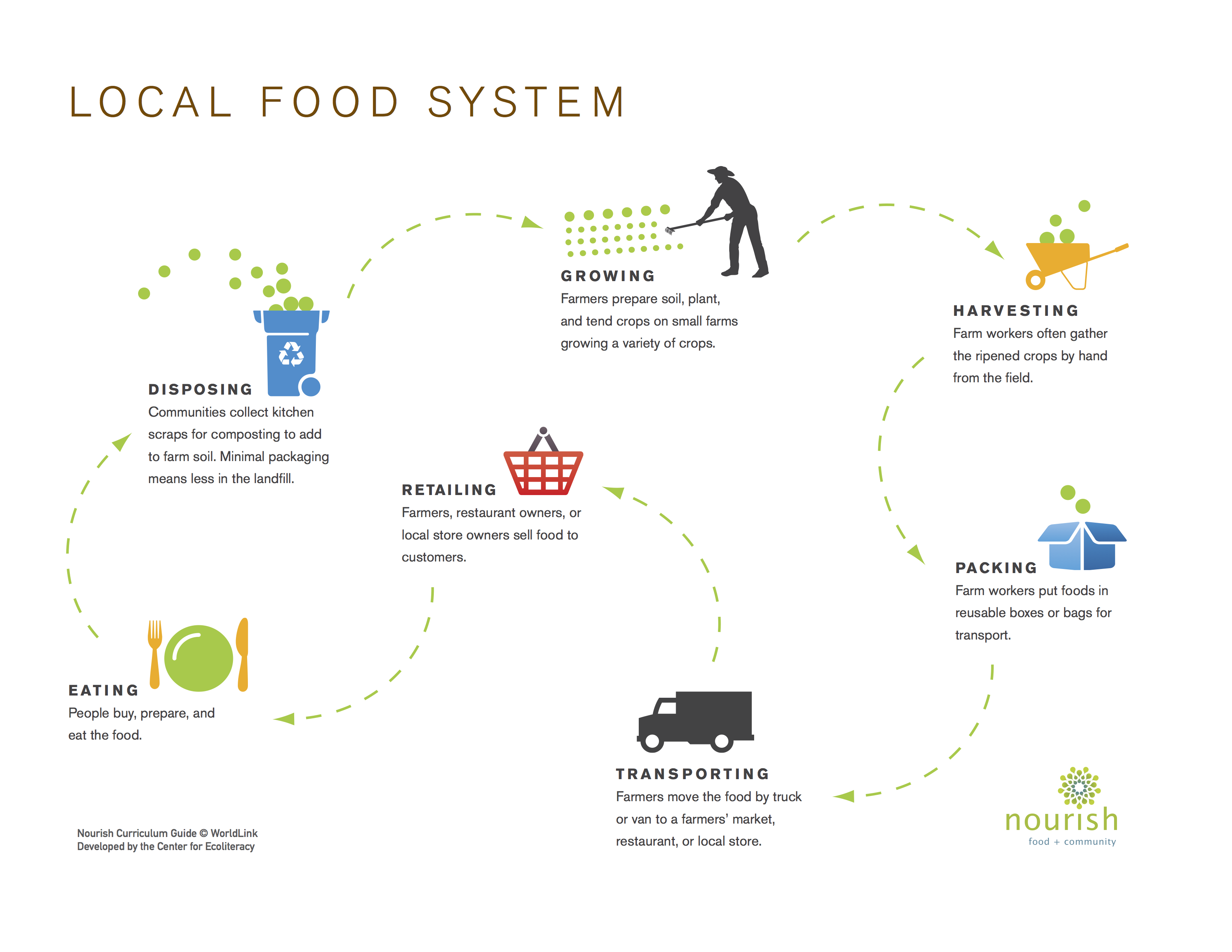|
Here at Pinnacle Prevention, much of our work revolves around local food systems in Arizona. We are all part of the food system, though most of us don’t realize it. The food system is comprised of nearly every aspect of food, including the environment in which it is grown, production, demand, processing, transport, and where it is consumed and disposed. Each and every component is complex in its own right. Our mission is to encourage and build healthy, sustainable food systems in our state and communities. Think of the food system as the path that food travels from fields to your fork and all the components that are a part of that path. Government policies affect the food system, production practices influence it, and our nutrition plays a role, too. If you’ve been keeping up with our blogs about food waste, you are already learning more about one part of our food system, and one way you can help build more sustainable food systems in our communities. So why does all of this matter? As population continues to increase, and as our environment becomes further stressed by our production and consumption habits, it’s critical to understand and tackle the complex challenges within food systems across the world. Interactions between food systems, government and the environment shape our lives, and these interactions will only get more complicated as time goes on. The Sustainable Cities Institute describes a sustainable food system as one that:
The Institute also provides examples of activities that support healthy food systems, including:
The food system may seem overwhelming and far removed from your daily decisions, but you can help tackle food system challenges through simple choices every day.
If you are interested in continued learning opportunities surrounding food systems, check out this free Johns Hopkins course. To understand what the food system looks like, check out these graphics from Nourish Life. Our team at Pinnacle Prevention focuses on systems change to make a lasting impact on our Arizona food systems. Tune in to our blog next week to learn more about systems change and how you can contribute!
3 Comments
James Andrew
10/6/2017 02:45:32 am
Excellent provide the information about foods improves by eating the right foods. I found this link where you buy fresh food .You should also check it out website" Harvestorder.com"
Reply
James Andrew
10/6/2017 02:55:42 am
Excellent provide information about food improve by eating right food.I found this link Where you buy fresh food. you should also check out website [email protected]
Reply
7/13/2024 11:39:28 am
The TalktoGiant survey is an essential tool for Giant Food Stores to gauge customer satisfaction and identify areas for enhancement. Feedback collected through the survey helps the company understand customer needs and expectations better. This focus on customer experience ensures that Giant continues to provide high-quality services and products that meet shopper demands.
Reply
Leave a Reply. |
Pinnacle Prevention BlogFollow our blog for tips, insights and conversations about healthy living. Archives
June 2024
Categories
All
|
Location |
|


